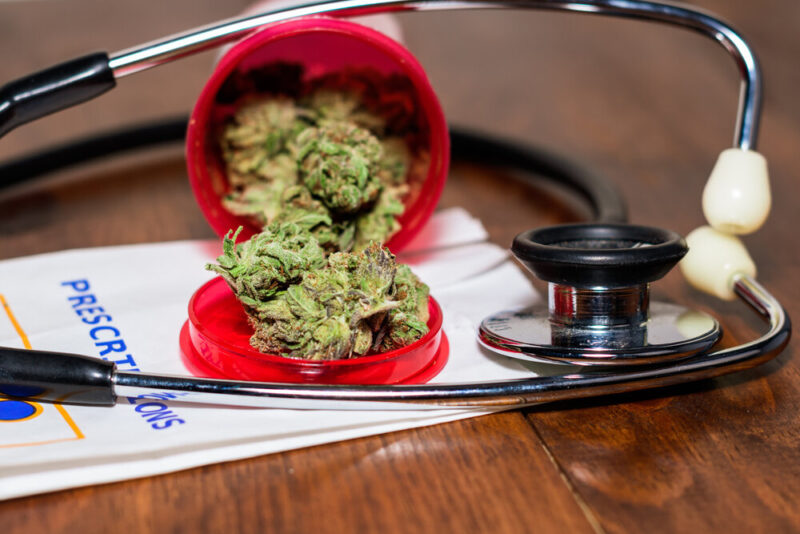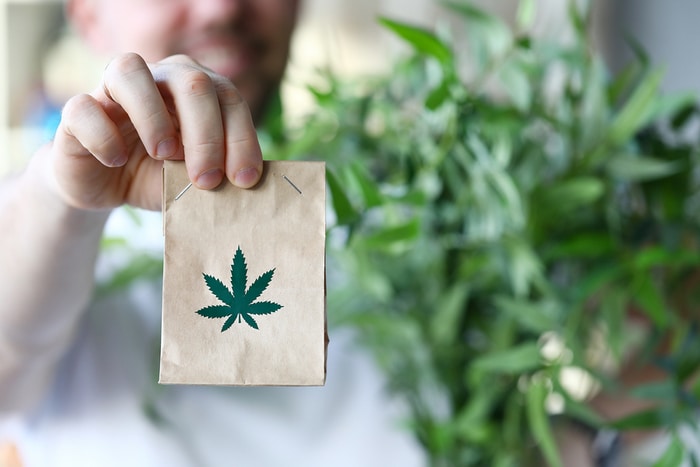With medical marijuana becoming legalized in more than half of the United States, it’s become considered as an alternative medicine to help manage certain conditions. Medical marijuana products are derived from the Cannabis sativa or indica plant. It has three major active compounds, and the one used for medicinal purposes is Cannabidiol or CBD.
In order to use these products legally, you’ll have to be a qualified patient and then obtain an identification card. The card verifies that you’re a patient of the medical marijuana program and give you permission to purchase CBD-based medicine at a dispensary or to grow your own plants.
However, the card does have its restrictions as laws surrounding medical cannabis usage differ from state to state. In some states, the usage is still fully criminalized. On the other hand, some states require people applying for a card be 18 years or older, while others have to wait until they’re 21 years old.
This is why it’s important to check and confirm your state’s specific laws to make sure you’re in compliance with what’s allowed. Keep this in mind when traveling out of state because even if marijuana is legalized under your state’s law, it’s still illegal under federal law as a Schedule I drug under the Controlled Substances Act.
Here are the steps you can follow to get a medical marijuana card:
Check Your Qualification

The first step in the process to get a ‘cannabis card’ is to check if you’re a suitable candidate for one in your state. Since the card gives access to different types of medicines, it’s only given to select people to help manage their medical condition.
For example, to qualify for the medical marijuana program in Pennsylvania, you need to be diagnosed with the following chronic conditions that include but aren’t limited to:
- Alzheimer’s Disease
- Multiple Sclerosis
- Epilepsy
- Chronic Pain
- Terminal Illness
- Cancer
- Chron’s Disease
- Autism
- HIV/AIDS
Having one of the above-listed conditions is not an automatic qualification. As such, it’s better to get a medical marijuana card via an online platform like Farmacist. You’ll also still need the approval of a doctor to begin the actual documentation process.
Book A Consultation

The next step to secure yourself a marijuana card is to consult with an authorized physician. You’ll need to bring proof of the diagnosis of your condition for the doctor to verify. Prior to this, you can get a copy of your medical records from your health insurance provider.
A publicly available list of registered physicians approved for the program can be found on your states’ Department of Health Website. Check under the ‘medical marijuana’ tab and choose the ‘find a doctor’ option. Remember that if doctor’s consultations aren’t covered by your health insurance plan, you’ll have to pay out of pocket for this process.
The practitioner will then use the consultation to evaluate if you would benefit from using medical CBD. They do this by asking about your medical history and the current treatment of your condition. If the doctor approves, they will certify your diagnosis and explain to you the medical marijuana program and what to expect from it.
Register A Profile

Once you’ve been certified by the participating physician, you’ll need to register a patient profile online. You can do this by visiting the website for the Department of Health’s Medical marijuana registry for your state.
On there, you’ll have to fill in a form stating your name, identification, address, and contact information. The online system will then verify your credential and issue you with a personal patient ID number.
From here, you need to contact the physician who approved your diagnosis. They will then upload your records and proof of their certification, and the system will link it to your profile. It’s vital at this point that you follow the formatting as stringently as possible. The system only allows information in the same order that it appears on your ID.
Pay The Fee

When all your information is recorded and sent to your state’s Department of Health, all that’s left is to pay the fee. The fee costs USD$50 and is used for issuing your marijuana card.
The card will be mailed to you in a matter of days or weeks, depending on the number of card applications they have to process. It’s ideal to wait until your card is present with you before you attempt to purchase any CBD medicine.
The marijuana card is valid for a full year from the date that it was issued and will need to be renewed each year. Part of the renewal process will be to consult with the authorized physician to get approval again.
Unless you’ve moved and changed addresses, there’s no need to fill in the patient profile again. The state keeps your information in their logs, and your profile stays in their system. If you ever need to travel out of state while using CBD medicine, read up on travel rules to prevent any trouble.
Visit A Dispensary

Finally, when you’ve been issued your card, you’re welcome to purchase medicinal marijuana from any official dispensary in your state. A map showing the location of dispensaries in your state is available on the official state website. Don’t forget to bring your medical marijuana card and present it to vendors when you visit.
Another option is to check local CBD business websites that could’ve opened up recently in your area. Just research or ask them if they’re licensed by the state to sell their medical products first. These dispensaries will have a variety of medicines for you to buy or sample. Most have an expert to help you if need be or answer any question you may have.
Conclusion
Getting your medical marijuana card may seem like a tedious process of paperwork and consultations. The key to avoiding frustrations and disappointment is to be prepared. Each stage of the application process tells you what to expect and what you can do to proceed.
The first step is to check if you have a qualifying condition approved by the Medical Marijuana Program. Next is to find a doctor approved by the Department of Health to certify your medical diagnosis.
Once this has been completed, you register a patient profile by filling in an application form and paying the card-issuing fee. From here, it’s just a wait for the card to be mailed to your home, and you’re done.
If the entire process feels daunting, there are companies that specialize in helping you navigate the entire process. They can find and book a consultation with a practitioner for you or facilitate the annual card renewal. Just explore the choices that you have at your disposal to streamline the process so you can get your medical marijuana card when you need it.












